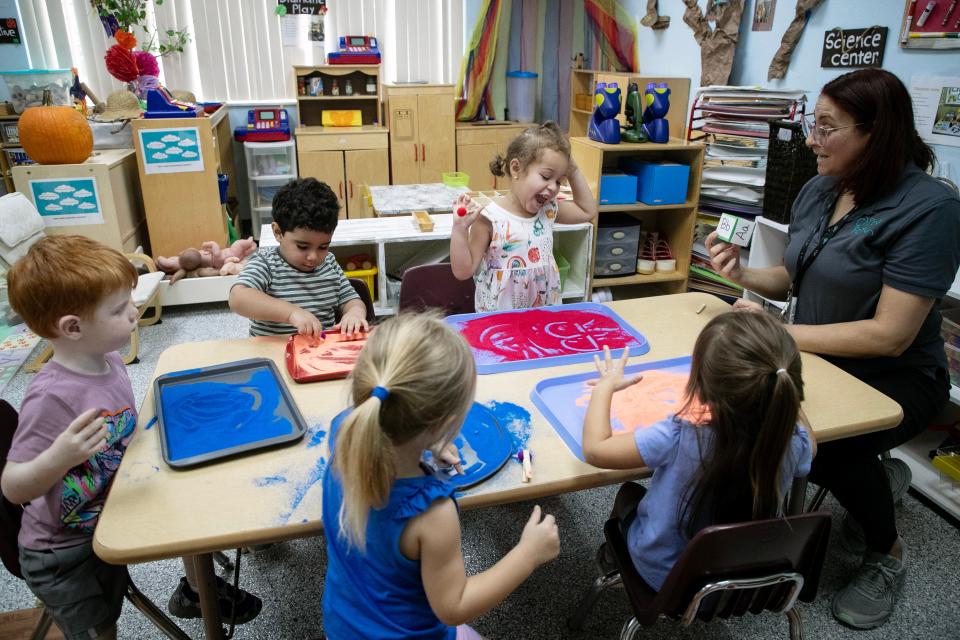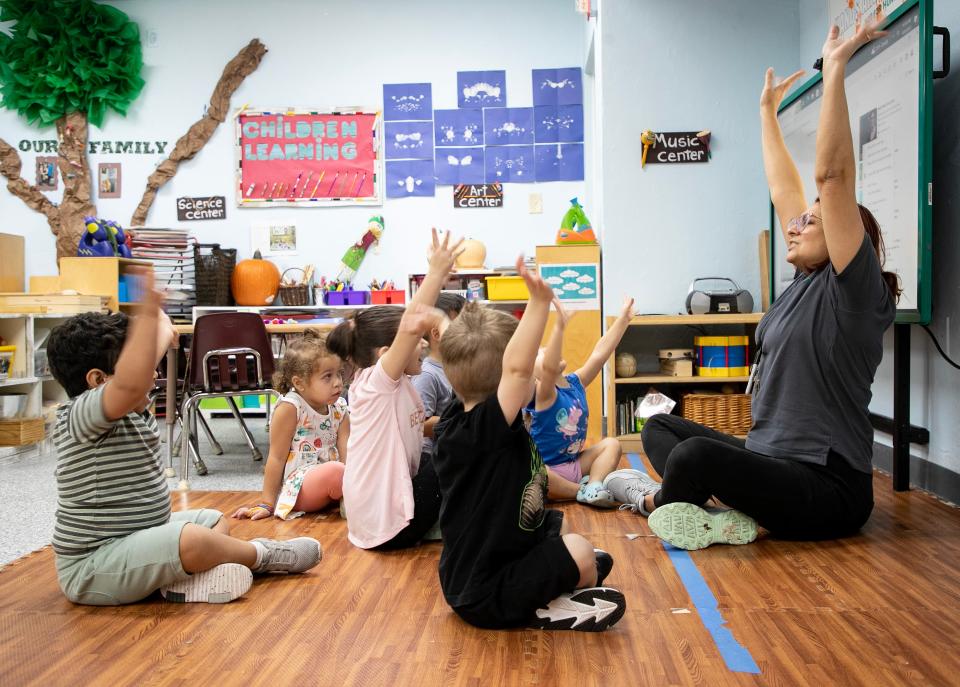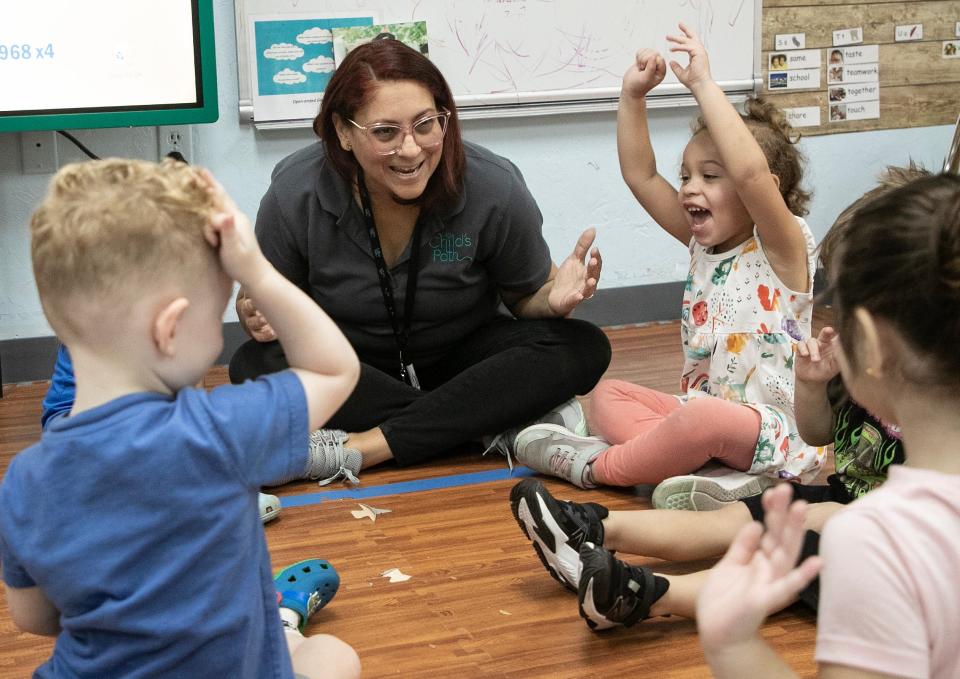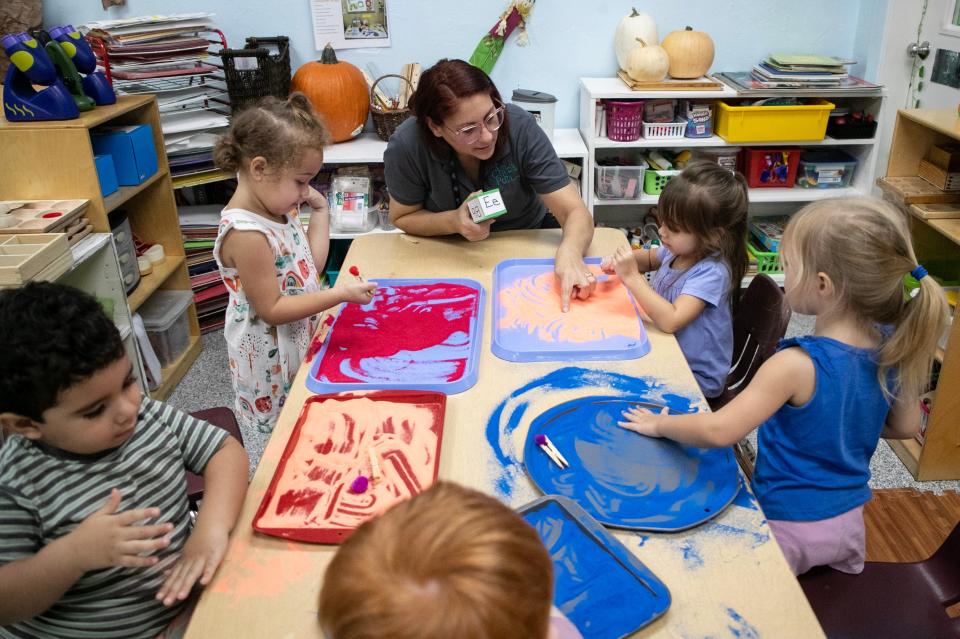More Florida child care centers likely to close, leaving families in bind
Child care centers in Florida are counting on state support and fundraising to stay afloat after a lifeline of federal subsidies ended.
A key question is how far $315 million can stretch. That's what was allocated this year by the state Legislature for child care centers.
It’s a far cry from $1.5 billion they received statewide under the American Rescue Plan’s child care stabilization program for the past two years. The federal support stopped Sept. 30.
The Early Learning Coalition of Southwest Florida, which works with child-care centers in Lee, Collier, Hendry and Glades counties, is receiving $12 million of the state help, according to Melanie Stefanowicz, chief executive officer of the coalition.
The coalition works with centers that participate in the state’s school readiness program for low-income families to qualify for tuition assistance and the voluntary prekindergarten program. It also acts as a resource for centers that are not under contract for those programs.

More: Guest opinion: 'We cannot let crucial early childhood programs hang in the balance'
More: Another child care center closes in Collier County; teacher shortage main culprit
Stefanowicz hopes the additional state money can prevent child care centers that barely break even from shuttering, which would send families scrambling to find alternatives and cause more job losses within the industry.
“Without access to affordable and reliable child care, parents, particularly single parents, may be forced to reduce their work hours or give up their jobs altogether, which can lead to financial instability and increased dependence on public assistance,” she said.
The Florida Chamber Foundation, which is focused on making the state more competitive, released study findings in September that child care challenges results in nearly a $5.4 billion loss to the state economy each year.

The federal money was crucial in Southwest Florida
The federal stabilization money was designed to offset impacts from the COVID-19 pandemic. Child care centers were forced to close for safety early in the pandemic, families kept children home and staff quit to protect themselves from being exposed to the disease.
Getting back on solid footing proved challenging even with the federal support, and Southwest Florida centers were dealt another punch.
Hurricane Ian hit Sept. 28, 2022 with Category 4 winds and historic storm surge in coastal areas; child care centers were not spared from damage and disruption to operations.
In the four-county region, 25 centers closed in the past two years, largely due to Ian. In some cases, centers closed when owners retired or were sold and closed shortly afterward, according to the early learning coalition.
The closures only take into account centers under contract with the coalition for school readiness and voluntary prekindergarten, which now stands at 370 centers in the four-county region.
The federal money provided a much-needed cushion and child care centers face coming to grips with the support ending, said Heather Singleton, chief executive officer of the nonprofit Child’s Path in Collier County.

That’s where fundraising is essential for her organization which operates two locations with a combined capacity for 118 children.
The profit margin at the end of this year at Child’s Path is projected to be 0.2%.
That will come out to a $6,000 gain from a $3.9 million operating budget which factors in a fundraising goal of $1.6 million this year, she said.
“Our actual existence depends on raising money from outside sources,” she said.
The fundraising target is up from $1.2 million last year to help replace $576,000 received from the federal stabilization program for the past two years.
Fundraising is a constant for operating costs not covered by what the state pays for each child enrolled in the school readiness program, she said. The amount that centers get from the school readiness program varies by the age of the children and other factors.
Families qualify for school readiness with income at 150% of the federal poverty level; in 2022 for a family of four the income cannot exceed $41,625, she said.

Child’s Path also has its own scholarship program to help families cover their share of tuition. That’s increasingly important against rising rental rates in Collier that is causing many working families to leave the area and stresses businesses for workers, she said.
“Businesses need to realize that by supporting us by charitable giving allows us to support their employee base,” she said.
The national and state picture could be bleak
The Century Foundation, a think tank and research group, determined in June that 3.2 million children nationwide face losing access to child care programs as a result of the $24 billion in federal stabilization funding ending.
Roughly 70,000 centers across the country are projected to close.
Many parents will be forced to move or change their jobs, reduce their work hours or develop piecemeal approaches for their child care needs, according to the foundation. The economic outfall is estimated at $9 billion in earnings a year.
The loss in tax and business revenue is estimated at $10.6 billion, according to the foundation.
The picture isn’t any better in Florida; the foundation projects 2,196 centers could close, causing nearly 213,000 children to lose access to their programs.
That’s out of 8,610 centers in the state which received the federal stabilization funding and supported 834,000 Florida children, according to the federal Administration for Children & Families.
Additional fallout is $604 million in lost income to families in Florida because parents will be forced to leave the workplace to take care of their children.
On top of that, employers will lose $633 million in productivity, which does not include the nearly 16,000 jobs lost in the child care industry.
Another national early learning advocacy group, Zero to Three, says families historically struggle to pay for child care costs and it will worsen, and Florida is no exception.
Child care expenses accounts for 11% of a family income but that climbs to 32% for a single parent in Florida, according to the organization’s data.
"If you thought child care was too expensive and too hard to find, it could get much worse over the coming months,” Miriam Calderon, chief policy officer for Zero to Three, said.
“Some families will be forced to walk away entirely, which only makes it harder for providers to stay in business and for parents to work,” she said.
What’s the impact to Southwest Florida?
Stefanowicz, of the early learning group in Southwest Florida, said she and her staff have not heard yet if any centers in the region will close as a result of the federal support that ended Sept. 30.
In Collier, 115 centers got stabilization funding and 214 centers in Lee, according to the federal Administration for Children & Families.
The coalition and its counterparts around the state have some discretion in how to award support from the $315 million approved by the state Legislature this past spring for centers, she said. Her organization is working on the application now.
Currently there are no waiting lists for families to get their children enrolled in centers in the four counties that the coalition works with, she said.
Families moving into the area may not realize they can get help with tuition and enrollment, she said.
“The availability of child care services is directly tied to workforce participation,” she said.
This article originally appeared on Naples Daily News: Florida child care cliff: Federal subsidies end, fallout could be dire

